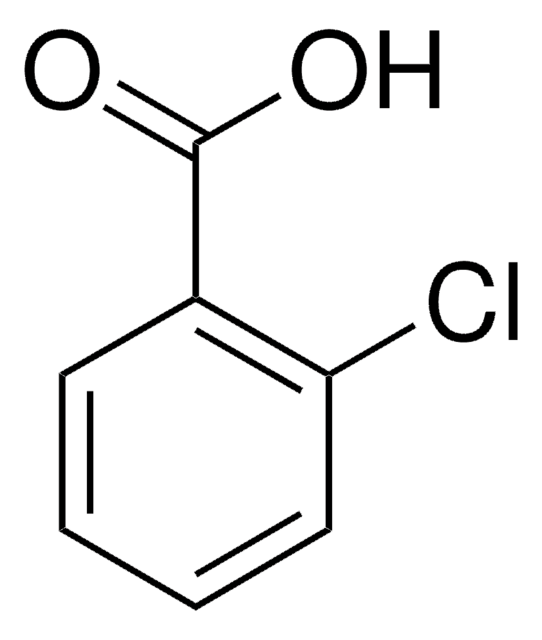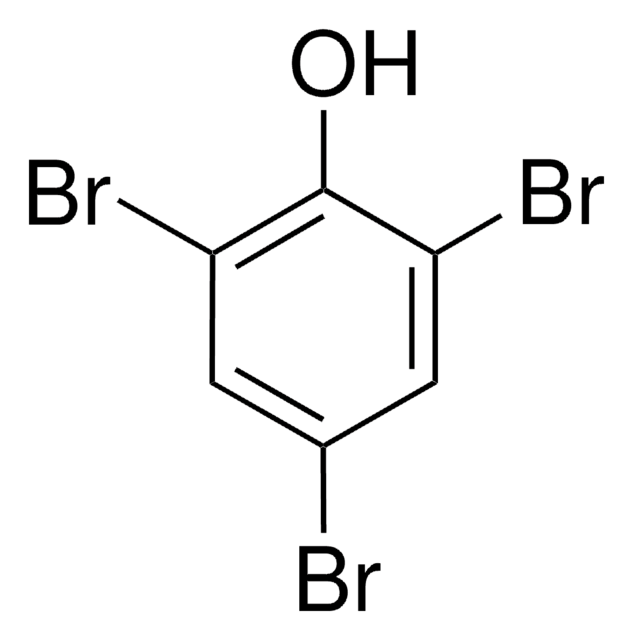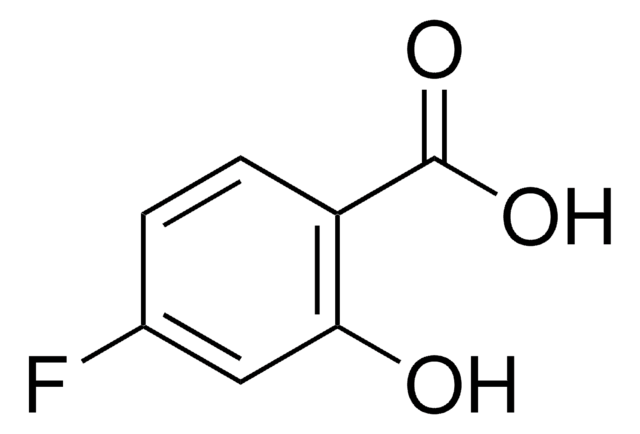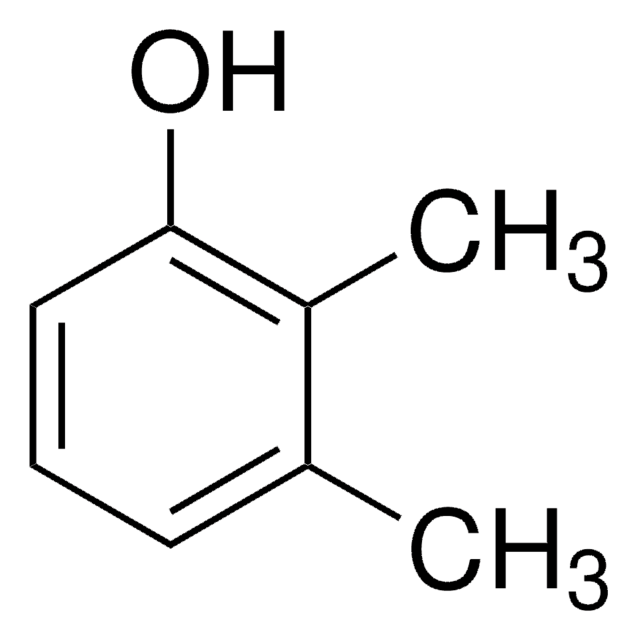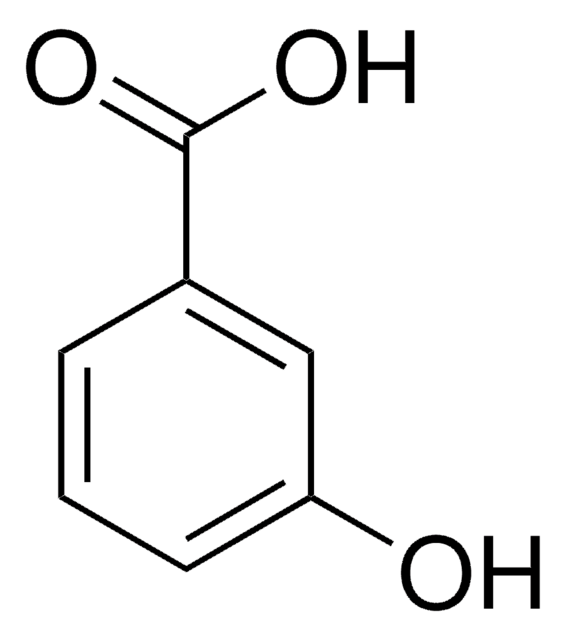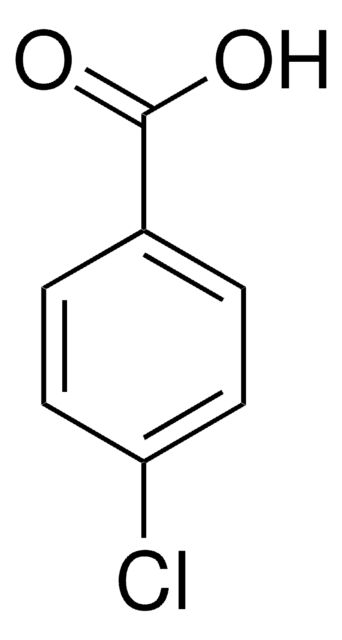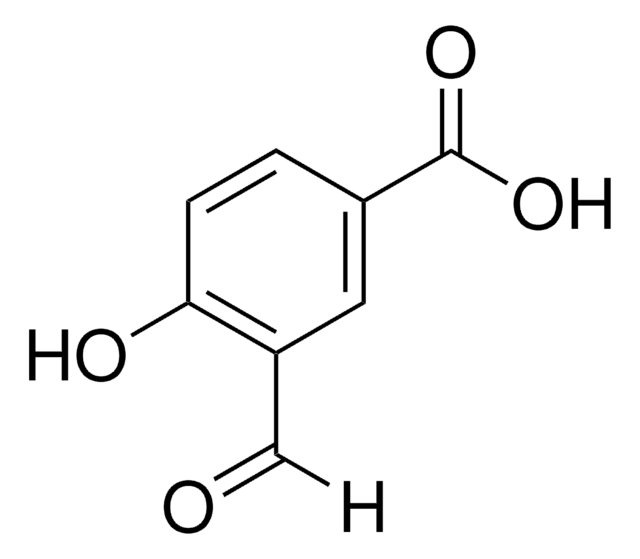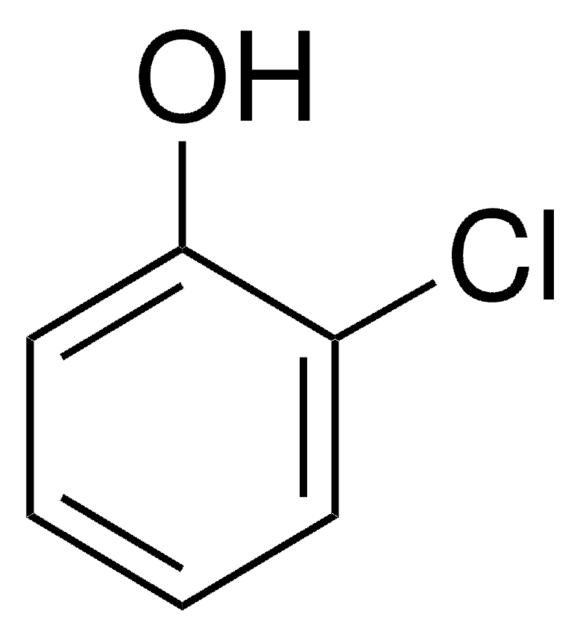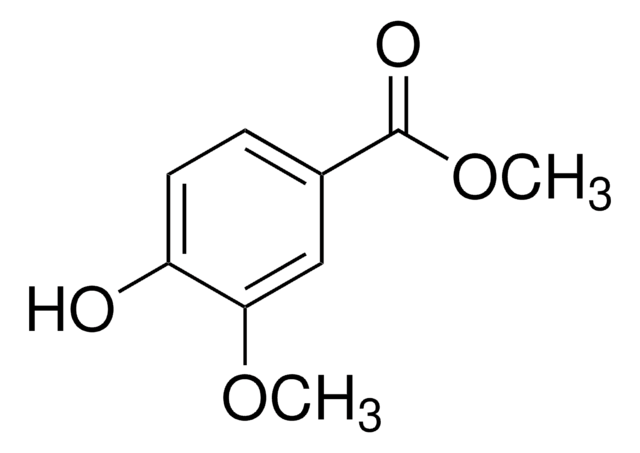Alle Fotos(1)
Wichtige Dokumente
659282
4-Hydroxy-3-Methylbenzoesäure
97%
Anmeldenzur Ansicht organisationsspezifischer und vertraglich vereinbarter Preise
Alle Fotos(1)
About This Item
Lineare Formel:
HOC6H3(CH3)CO2H
CAS-Nummer:
Molekulargewicht:
152.15
EG-Nummer:
MDL-Nummer:
UNSPSC-Code:
12352100
PubChem Substanz-ID:
NACRES:
NA.22
Empfohlene Produkte
Assay
97%
Form
solid
mp (Schmelzpunkt)
173-177 °C
Funktionelle Gruppe
carboxylic acid
SMILES String
Cc1cc(ccc1O)C(O)=O
InChI
1S/C8H8O3/c1-5-4-6(8(10)11)2-3-7(5)9/h2-4,9H,1H3,(H,10,11)
InChIKey
LTFHNKUKQYVHDX-UHFFFAOYSA-N
Signalwort
Danger
H-Sätze
Gefahreneinstufungen
Acute Tox. 4 Oral - Eye Dam. 1 - Skin Irrit. 2 - STOT SE 3
Zielorgane
Respiratory system
Lagerklassenschlüssel
11 - Combustible Solids
WGK
WGK 2
Flammpunkt (°F)
Not applicable
Flammpunkt (°C)
Not applicable
Persönliche Schutzausrüstung
dust mask type N95 (US), Eyeshields, Gloves
Hier finden Sie alle aktuellen Versionen:
Besitzen Sie dieses Produkt bereits?
In der Dokumentenbibliothek finden Sie die Dokumentation zu den Produkten, die Sie kürzlich erworben haben.
Yang Pan et al.
Water research, 88, 60-68 (2015-10-17)
Chlorine/chloramine residuals are maintained in drinking water distribution systems to prevent microbial contamination and microorganism regrowth. During household cooking processes (e.g., soup making), the residual chlorine/chloramines in tap water may react with the iodide in iodized table salt to form
Yang Pan et al.
Chemosphere, 144, 2312-2320 (2015-11-26)
During drinking water disinfection, iodinated disinfection byproducts (I-DBPs) can be generated through reactions between iodide, disinfectants, and natural organic matter. Drinking water I-DBPs have been increasingly attracting attention as emerging organic pollutants as a result of their significantly higher toxicity
F Guneral et al.
Clinical chemistry, 40(6), 862-866 (1994-06-01)
Organic acid concentrations were quantified by gas chromatography and the individual acids identified by mass spectrometry in urine specimens from a healthy Turkish pediatric population of ages 2 days to 16 years, subdivided into five age groups. We quantified 69
Unser Team von Wissenschaftlern verfügt über Erfahrung in allen Forschungsbereichen einschließlich Life Science, Materialwissenschaften, chemischer Synthese, Chromatographie, Analytik und vielen mehr..
Setzen Sie sich mit dem technischen Dienst in Verbindung.